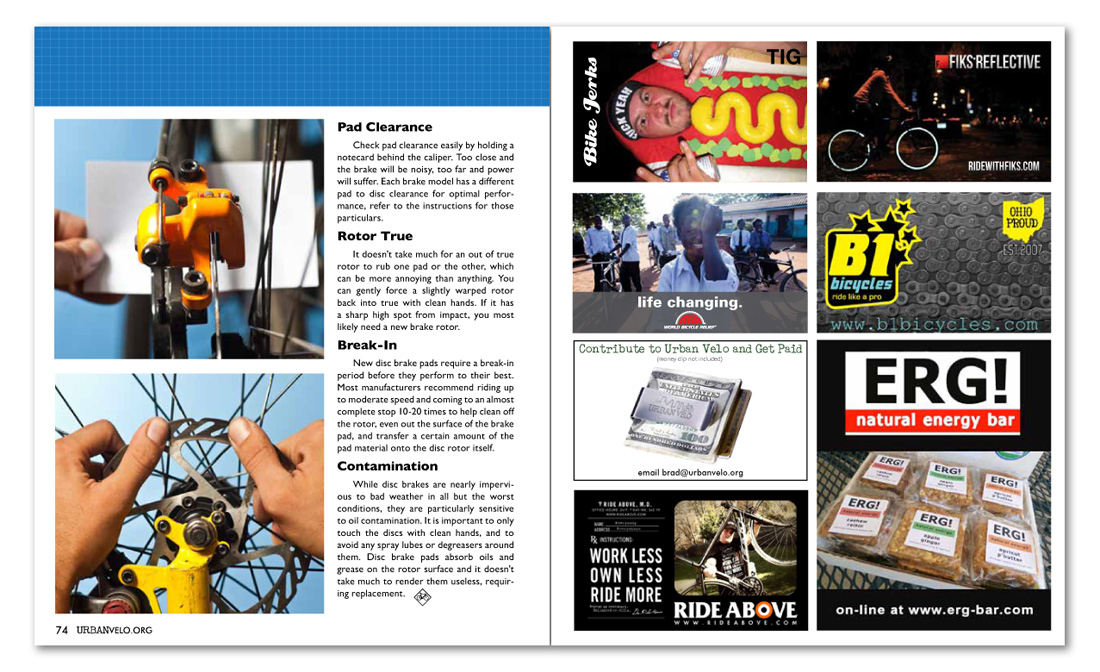


Pad Clearance
Check pad clearance easily by holding a notecard behind the caliper. Too close and the brake will be noisy, too far and power will suffer. Each brake model has a different pad to disc clearance for optimal performance, refer to the instructions for those particulars.
Rotor True
It doesn’t take much for an out of true rotor to rub one pad or the other, which can be more annoying than anything. You can gently force a slightly warped rotor back into true with clean hands. If it has a sharp high spot from impact, you most likely need a new brake rotor.
Break-In
New disc brake pads require a break-in period before they perform to their best. Most manufacturers recommend riding up to moderate speed and coming to an almost complete stop 10-20 times to help clean off the rotor, even out the surface of the brake pad, and transfer a certain amount of the pad material onto the disc rotor itself.
Contamination
While disc brakes are nearly impervious to bad weather in all but the worst conditions, they are particularly sensitive to oil contamination. It is important to only touch the discs with clean hands, and to avoid any spray lubes or degreasers around them. Disc brake pads absorb oils and grease on the rotor surface and it doesn’t take much to render them useless, requiring replacement.